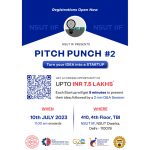
![]()
![]()
![]()



![]()
![]()
![]()
Bamboo Bottle
Overview
| Product Idea and description |
|
| Target group |
|
| Raw material required |
|
| Production capacity, facility and labour required |
|
| Production Process |
|
| Tools &Equipment’s required for production and prices |
|
| Pricing Strategy |
|
| Package, storage and transportation requirements |
|
| Marketing strategy | Bamboo based water bottles have seen a steady rise in demand in the national as well as the international market. DB Industries in Assam currently produces around 1,500 bottles per month and have standing demand of more than 8,000 water bottles per month.
|
| Distribution Channel |
|
Product SWOT Analysis
|
Strengths |
Weaknesses |
Opportunities |
Threats |
|
|
|
|
Financial Plan
To start the bamboo bottle manufacturing business, one can invest 24.12L INR with a working capital requirement of 3.17L INR per month, assuming the working capital cycle is 25 days and runs for a total of 8 work hours in a day.
| S.No | Parameters | Unit | Value |
| 1 | Capital Cost | INR | 2412500 |
| 2 | Working Capital | INR | 3774000 |
| 3 | Total Cost of Investment | INR | 6186500 |
| 4 | Sales | INR | 10500000 |
| 5 | Gross profit | INR | 4313500 |
| 6 | Tax @ 30% | INR | 1294050 |
| 7 | Net Profit | INR | 3019450 |
| 8 | Pay Back Period (Total Investment/Net Profit*12) | Months | 25 |
| S.No | Parameters | Value |
| 1 | Land & Building | 1000000 |
| Machinery & equipment | ||
| 2 | Portable Cross Cutting Machine (3 No.) | 60000 |
| 3 | Light Load Lathe Machine (2 No.) | 300000 |
| 4 | Sanding Belt Machine | 65000 |
| 5 | Pump Set & Treatment Tank | 200000 |
| 6 | Drying Chamber | 600000 |
| 7 | Electrification & Installation @ 10% cost of machinery | 122500 |
| 8 | Pre-Operative Expense | 30000 |
| 9 | Cost of Office Equipment | 35000 |
| 10 | Total Capital Cost | 2412500 |
|
S.No |
Parameters |
INR/Unit |
Value |
|
1 |
Workers (10 No.) |
8000 |
80000 |
|
2 |
Manager (1 No.) |
15000 |
15000 |
|
Raw Material & Utilities |
|||
|
3 |
Raw Material |
180000 |
|
|
4 |
Utility per Month |
15000 |
|
|
5 |
Water |
1500 |
|
|
Other Contingent Expenses |
|||
|
6 |
Repair & Maintenance |
3000 |
|
|
7 |
Transportation |
3000 |
|
|
8 |
Telephone |
1000 |
|
|
9 |
Other Consumables |
1000 |
|
|
10 |
Advertisement & Publicity |
2000 |
|
|
11 |
Postage & Stationary |
1000 |
|
|
12 |
Insurance |
10000 |
|
|
13 |
Miscellaneous Expenses |
2000 |
|
|
14 |
Grand Total of Working Capital (1 Year) |
3774000 |
|
|
S.No |
Parameters |
Unit |
Value |
|
1 |
Production per Month |
Pieces |
2500 |
|
2 |
Selling Price per Product |
INR |
350 |
|
3 |
Turnover per Month |
INR |
875000 |
|
4 |
Annual Turnover |
INR |
10500000 |



